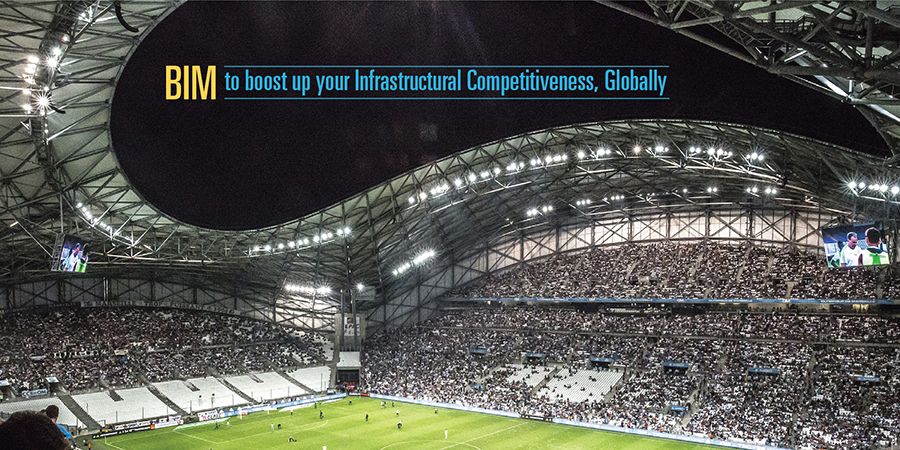
Infrastructure is a strong backbone of any country. Just like the construction industry across the world, postponements, clash, procurement, communication and contractual problems may epitomize megaprojects, such as museums, transportation and healthcare facilities using BIM across the whole building construction project timeline.
It should not be like a wake-up call for general contractors, sub contractors, and MEP contractors and various architectural and construction firms. The typical approach of getting work done through cheap labor, makes it all the more difficult to use advanced tools and technologies, and get experienced staff or architectural engineering design support partners to deliver appropriate BIM solutions. With Billions of dollars at stake, construction firms need a paradigm shift to embrace it for their infrastructure developments.
Embrace BIM to Enhance Working Relations
Embracing BIM could fundamentally enhance working relations on undertakings. There is worth in embracing devices and methods that would upgrade community oriented preferences by experts working in the business. Be that as it may, the general procedure to execute an established BIM methodology would at first worsen current issues before it could deliver upgrades to the development process.
By embracing BIM tools and BIM processes it has become a lot quicker, smoother and more affordable for government agencies to plan, design, build and manage transportation infrastructure.
How does BIM boost up your Infrastructural Competitiveness?
- The utilization of BIM enhances efficiencies as the project progresses, since all data is contained in a single area.
BIM tools depend on 3D models, and they help planners identify clash detection. Some companies are exploring added dimensions such as cost, time, and assets, with a specific end goal to smooth project administration in the execution stage and encourage upkeep amid operations.
The utilization of elevated, laser, and radar innovation for scanning can quickly enhance surveying efficiency. For instance, in the configuration of transmission lines, the ground review can be led with helicopter-mounted scanners/radars instead of having ground groups do manual studies.
- Another essential element that enhances the utilization of BIM is the better interoperability between the team members.
BIM offers coordination tools that let architects, structural and MEP engineers deal with a venture all the more viably. For instance, by working with the same model as a base, MEP specialists can format their frameworks around the structural model, enhancing coordination.
A standout amongst the most valuable instruments accessible is clash detection, which is an incredible approach to diminish blunders via naturally checking collisions or interferences between the structural system and the ducts and plumbing systems. The coordination issues can then be identified and tackled in the outline stage rather than stretching out them to the construction, enhancing precision and decreasing mistakes.
- Huge numbers of today’s unpredictable structures are staggeringly difficult to envision. Drawings help the designers to choose the aesthetics of a structure, yet frequently the best way to exactly position the structural components is to make a 3D model, through scan to BIM process, of the geometry.
BIM specialists can create a 3D model taking into account the skin of a structure and the architect’s guidelines, so that the design can be settled. Delivering a 3D model likewise benefits the fabricator and erector, allowing them to ‘stroll through” the 3D model to determine any issues. This guarantees the structure is manufactured and raised rapidly, precisely, and productively.
From pedestrian bridges, highway and railway structures, essentially no bridge detailing job is too meek or too complex for the team of expert detailers. By combining detailing and modeling one can deliver 3D models; shop drawings; erection drawings; placement drawings; blocking diagrams; bills of material and so on for the smooth functioning of the project.
With BIM solutions now on mobile devices, enabling updates between off-site and on -site, there is a sharp shift in role of technology in construction industry.





